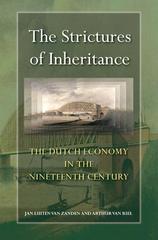Question
below is a case study: Rice farmers across Cambodia and Myanmar, in Southeast Asia, have been left searching for new markets for their crop after
below is a case study:
Rice farmers across Cambodia and Myanmar, in Southeast Asia, have been left searching for new markets for their crop after the European Union (EU) announced that it will now be imposing substantial tariffs on rice from both countries for the next three years. An investigation has confirmed that the increase in rice imports from these countries has been damaging to EU rice producers.
Representatives of EU farmers welcomed the decision, as the cheap rice imported from Southeast Asia has been contributing to EU farmers and labourers leaving agriculture and migrating to towns.
EU rice imports from the two Southeast Asian countries increased from 9000 tonnes in 2012 to 360 000 tonnes in 2017, leading to a sharp fall in the price of rice in the EU. In 2018, approximately 30% of all EU rice imports came from countries with duty-free status, with most being shipped in from Cambodia and Myanmar. The increase in low-price imports has caused serious difficulties for EU rice producers. Their market share in the EU dropped substantially from 61% to 29%.
Rice is currently grown across eight EU countries including Italy, whose government initially requested that the EU investigate the issue in March 2018 to protect the EU rice industry.
Cambodia and Myanmar have enjoyed duty-free rice exports to the EU since 2010, when tariffs on the crop were removed as part of a policy which aims to promote EU trade in goods with the world's 50 least-developed countries. Other more developed countries in Southeast Asia, including Thailand and Vietnam, have long been paying tariffs of around US$200 per tonne for rice exports to the EU. For both Cambodia and Myanmar, rice is a major export and the EU has become their most profitable market, so the new tariff has harmed their economies.
The EU is currently Cambodia's largest destination for rice exports, accounting for 43% of all exported rice. It is thought that Cambodia's rice industry could be put in a critical condition as a result of the EU tariffs. In order to offset the additional costs resulting from the tariffs, local rice farmers will have to cut production costs, and may need to grow different crops altogether. One suggestion is that government subsidies could make Cambodia's rice industry more competitive.
The impact of the tariff will ultimately depend on the extent to which EU consumers consider rice produced in the EU to be a good substitute for Cambodian rice. Consumers in Europe may not mind paying a bit more for Cambodian rice.
Myanmar is in a similar situation, as the EU has become one of Myanmar's major rice markets. Myanmar reached an all-time high of 293000 tonnes of rice exported to the EU in 2017. But this could change now that there is a high barrier for entry to the EU rice market, forcing farmers to look closer to home for different buyers. Myanmar's Rice Federation stated that the EU's decision to levy tariffs on the country's rice exports had serious potential negative effects on Myanmar's economy.
-the question:
-Discuss the view that the EU should give tariff-free access to the EU market to all producers of rice. (6)
Step by Step Solution
There are 3 Steps involved in it
Step: 1

Get Instant Access to Expert-Tailored Solutions
See step-by-step solutions with expert insights and AI powered tools for academic success
Step: 2

Step: 3

Ace Your Homework with AI
Get the answers you need in no time with our AI-driven, step-by-step assistance
Get Started


